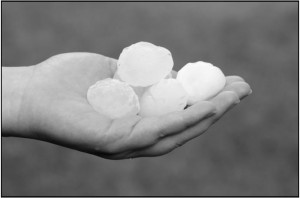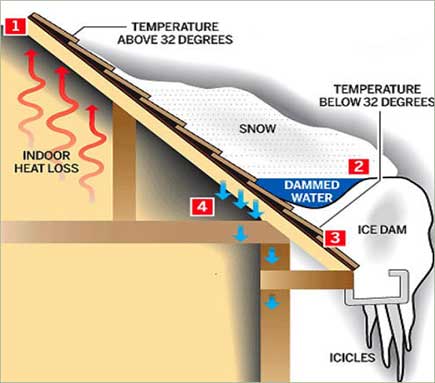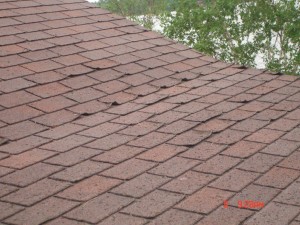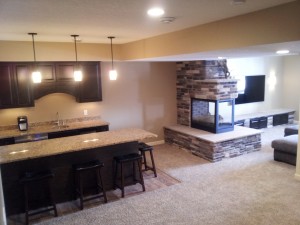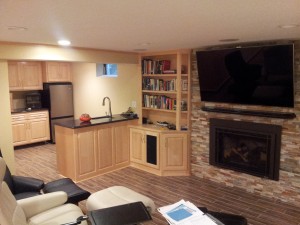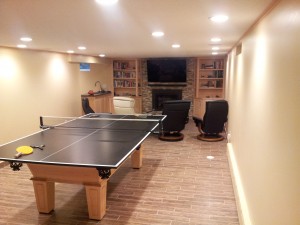- How old is your home/ siding?
If your home was built before 1978, you will need to have it tested for lead. The test is very simple, if lead is found, the tearing off and disposal of the siding will need to be done a bit more carefully.
- Have there been any bad storms recently in your area?
Hail and wind can wreak havoc on your home. Let us come inspect your siding to give you peace of mind that the exterior of your home is doing its’ job! We are experienced in handling insurance claims and will make sure your home is restored to its’ previous condition!
- Have you ever had any water problems?
Water leaks coming in through the walls could be a sign that your siding has been damaged and isn’t protecting your home as well as it could be.
- Do you have any area’s around your home that may allow for any critters to get in (birds, mice, bats, ants, termites, etc.)? These area’s could be as small as a quarter, and can be located in your soffits, fascia, or siding.
- What type of neighborhood do you live in? What type of siding do the other homes predominately have?
In 2009 we sided a home in Maple Grove, MN, in a very nice neighborhood. A block away, there are 1 million dollar homes; a block in the other direction, the homes value around $250,000. This home was right smack in between the two. We could have put up vinyl siding, but after looking at the surrounding areas, and being in a neighborhood that would yield a higher dollar amount in a few years, we researched the best value for this customer and went with a fiber cement board to give the front of the home more value. This type of face lift will position your home to sell and to be envied.
- What type of house wrap do you currently have?
Tyvek is the pioneer, and ultimately created housing wrap. House wrap needs to breath…a great test is to hold the product face out, it should hold water; when you turn it around, water should drip through.
- Do you also require new windows?
If so, you will want the windows installed prior to the installation of your new siding. It will make the installation of the windows more airtight, and the flashing will be better because a window tape will be used to the house and the house wrap. However, if new windows are not in your budget, then using a bit more care, and aluminum flashing, we can still do the job right.
- What type of siding do you currently have? What type of siding is best?
As mentioned earlier, your neighborhood can help you out with that answer. There are a few different types: vinyl and steel siding are very popular.
Vinyl siding has gotten a bad reputation in the past due to bad seams, bubbling, wind tearing it off, cracking in the winter time, and fading; but it has come a long way in the past 10 years. Here is a little advice coming from 20 years in business and the process of trial and error:
Bad seams – bad seams, more often than not, stem from a poorly made product. Another cause of this is poor installation, as vinyl siding is known to expand and contract.
Bubbling – this comes from poor installation; not hitting studs, nailing tight, or using a staple gun and not hitting a stud. It is important to have installers who are certified in the product being installed. Every manufacturer has certain ways they want their siding product installed; using a professional who will follow those guidelines will allow you to get your full warranty. If a company is certified, that means their installers will be as well.
Wind damage – again, this is an issue of installation gone wrong. Simply using the incorrect size nails can cause this and will void your warranty…this is why it is so important to have ANY product on your home installed by someone following the manufacturers specifications. Neglecting those specifications can end up costing you more money, as your product will not be in compliance with the warranty.
Cracking and Fading – these are manufacturer issues; consult your warranty information. If you have misplaced it, you can find it easily online by going to the manufacturers website. If you are unsure of the type of product that was used, consult your installer if you did not do it yourself.
All this information should give you a little insight into your siding. Vinyl siding seems like it comes with a lot of issues, but as you can see, the majority of the issues are caused by POOR INSTALLATION! These companies have spent millions of dollars on research on how to make these products better, and over time, they have improved. However, don’t take a chance and lose your warranty by having an uncertified installer working on your home.
Steel siding has always been a great option. Unlike vinyl siding, it contracts and expands very little, and maintains its look for a long period of time.
Here are some pros and cons to steel siding:
- If you dent your steel siding, you’re pretty much stuck with the dent…your contractor can replace it, but it cannot be easily done without residual damage to the surrounding pieces. Though it may contract and expand very little, with seamless steel siding in the colder months you can literally hear it contracting and expanding; and it is very loud.
- Rusting can happen, though it is a rarity.
- You can never get a real wood look with steel siding, as the enamel paint has a sheer look to it, and a matte finish is impossible – unlike vinyl siding where this look can be achieved.
- Steel siding is very durable, and along with correct installation, can last a lifetime with very few issues.
- It is nailed tight so it hardly ever blows off, even with poor installation (missing a stud here and there) the ones they hit will hold the product on.
- Edco makes a great product that you can literally bury in the ground and the warranty will still remain! That is impressive!
There are many factors to take into consideration when you decide to replace your siding, and choosing which product to use. We can help you decide!
Call Advanced Home Improvements for a FREE estimate today!





